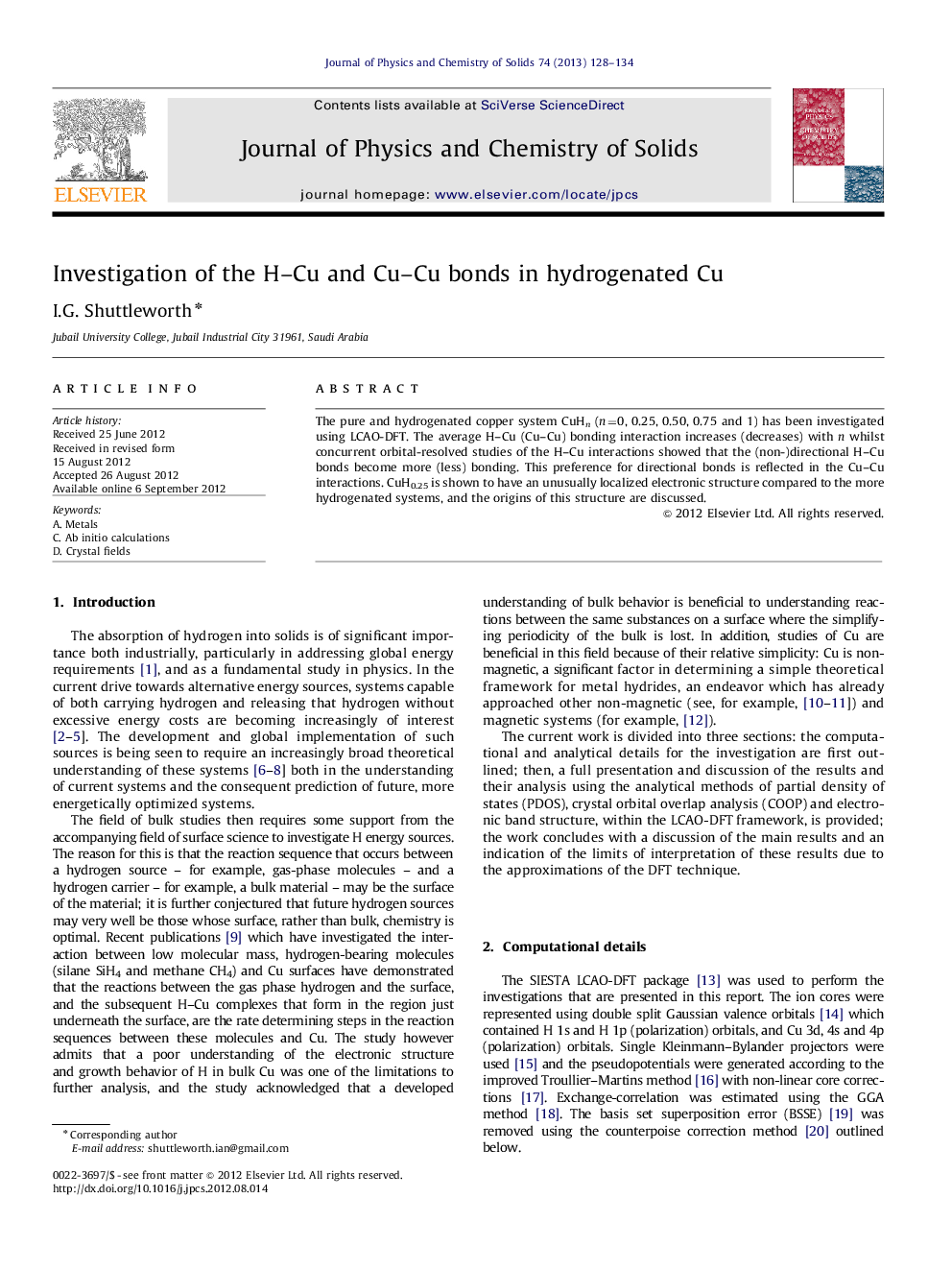| Article ID | Journal | Published Year | Pages | File Type |
|---|---|---|---|---|
| 1516469 | Journal of Physics and Chemistry of Solids | 2013 | 7 Pages |
The pure and hydrogenated copper system CuHn (n=0, 0.25, 0.50, 0.75 and 1) has been investigated using LCAO-DFT. The average H–Cu (Cu–Cu) bonding interaction increases (decreases) with n whilst concurrent orbital-resolved studies of the H–Cu interactions showed that the (non-)directional H–Cu bonds become more (less) bonding. This preference for directional bonds is reflected in the Cu–Cu interactions. CuH0.25 is shown to have an unusually localized electronic structure compared to the more hydrogenated systems, and the origins of this structure are discussed.
Graphical abstractBand structure for the low H concentration CuH0.25 and pure Cu systems Figure optionsDownload full-size imageDownload as PowerPoint slideHighlights► Preferential directional bonding in an environment that is expected to be highly non-directional. ► Increase (decrease) in the strength of the average H–Cu (Cu–Cu) interaction as hydrogenation increases. ► Formation of a occupied band gap for the low H concentration system CuH0.25.
